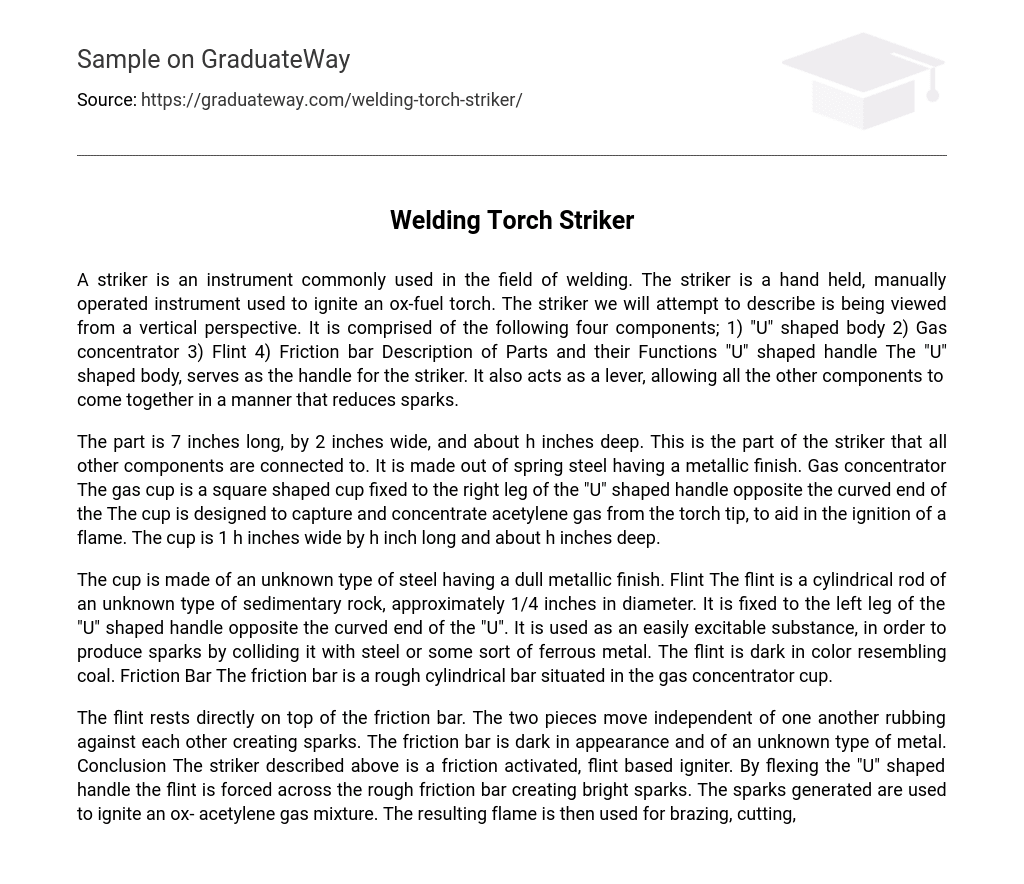A striker is an instrument commonly used in the field of welding. The striker is a hand held, manually operated instrument used to ignite an ox-fuel torch. The striker we will attempt to describe is being viewed from a vertical perspective. It is comprised of the following four components; 1) “U” shaped body 2) Gas concentrator 3) Flint 4) Friction bar Description of Parts and their Functions “U” shaped handle The “U” shaped body, serves as the handle for the striker. It also acts as a lever, allowing all the other components to come together in a manner that reduces sparks.
The part is 7 inches long, by 2 inches wide, and about h inches deep. This is the part of the striker that all other components are connected to. It is made out of spring steel having a metallic finish. Gas concentrator The gas cup is a square shaped cup fixed to the right leg of the “U” shaped handle opposite the curved end of the The cup is designed to capture and concentrate acetylene gas from the torch tip, to aid in the ignition of a flame. The cup is 1 h inches wide by h inch long and about h inches deep.
The cup is made of an unknown type of steel having a dull metallic finish. Flint The flint is a cylindrical rod of an unknown type of sedimentary rock, approximately 1/4 inches in diameter. It is fixed to the left leg of the “U” shaped handle opposite the curved end of the “U”. It is used as an easily excitable substance, in order to produce sparks by colliding it with steel or some sort of ferrous metal. The flint is dark in color resembling coal. Friction Bar The friction bar is a rough cylindrical bar situated in the gas concentrator cup.
The flint rests directly on top of the friction bar. The two pieces move independent of one another rubbing against each other creating sparks. The friction bar is dark in appearance and of an unknown type of metal. Conclusion The striker described above is a friction activated, flint based igniter. By flexing the “U” shaped handle the flint is forced across the rough friction bar creating bright sparks. The sparks generated are used to ignite an ox- acetylene gas mixture. The resulting flame is then used for brazing, cutting,





